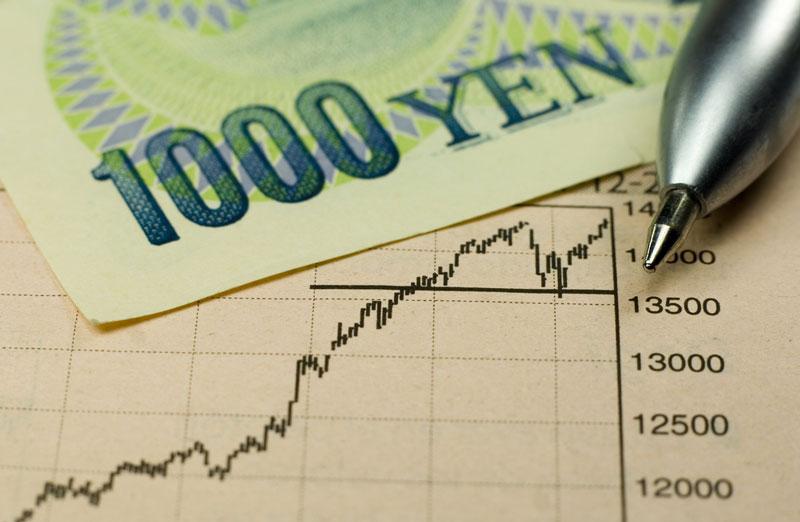Despite claims to the contrary in the mass media, Japan’s economy is continuing to suffer mightily under the leadership of Prime Minister Abe Shinzo. Abe is from a famous family and he’s a convincing talker, so he was able to bamboozle people into believing that he could make Japan prosper with his three arrows. These metaphorical arrows stand for “monetary stimulus,” “fiscal stimulus,” and “structural reform.”
When Abe was elected using his “three arrows” symbolism to attract votes, I thought the Japanese people were beginning to believe in magic. Perhaps they were gullible or a little lazy in thinking or thought they would receive “free stuff” from Abe. No matter, Abe became Prime Minister in December 2012 and shot off his arrows.
With his “monetary stimulus” arrow, Abe arm-twisted the central bank into doubling the money supply in just a few months time. I could just imagine Abe rubbing his palms together and fiendishly muttering “We’re going to be rich, rich, RICH!” All that the central bank had to do was type a few numbers into their computers to make this happen. Naturally, the newly created money was distributed to politically powerful banks.
How did all of this money creation affect the common people? Despite claims that Japan has less than 2 percent inflation, I can assure you that the prices of many goods, especially imported goods like energy, have increased dramatically since the monetary stimulus arrow was fired. Wages, on the other hand, have remained depressed. With higher expenses to pay, Japanese people can’t afford other goods they would like to buy and businesses can’t afford to raise wages, hire, or expand. Only Abe’s bankster friends have profited from this scheme by speculating in the stock market with the counterfeited money that had been credited to their accounts with the central bank computer.
Japanese people are mostly smart enough to realize that typing numbers into a computer can’t make an economy strong, yet they just haven’t figured out that Abe’s monetary stimulus is nothing but a sneaky counterfeiting scheme.
At the same time as the monetary stimulus arrow doubled the money supply, Abe and his gang used their fiscal stimulus arrow to enormously increase spending on government works projects. Unlike capitalists who at least try to invest productive enterprises, the government allocates money based on pull and other political considerations. Wasting money on things like a new sewer system in Kiev, replacing the perfectly good Olympic stadium with an expensive new Olympic stadium, and handing out plum contracts for highways to nowhere will never generate a profit. Government investment is more like consumption, often creating a 100-percent loss.
These money-losing projects weigh heavily on the people. After all, they will have to pay for this waste in the form of higher taxes and higher debt service. Even if by some miracle the fiscal spending created a profit, the money wouldn’t be distributed to the taxpayer. Heads you lose, tails you lose.
Most Japanese people are smart enough to realize that investing in things that lose money can’t make an economy strong, yet they just haven’t figured out that Abe’s fiscal stimulus is nothing but a sneaky scheme to enrich his well-connected friends. After nearly twenty-five years and fifteen rounds of fiscal stimulus spending, you'd have to be totally bamboozled to still be a believer in this failed Keynesian claptrap.
To pay for his “fiscal stimulus” arrow Abe decided to raise taxes and take the money he needed by force. He raised car taxes and income taxes and he raised sales taxes by 60 percent, but he also announced plans to raise sales taxes by 100 percent. He is considering increasing taxes on married people and poor people. With each tax increase and threat of further tax increases, the economy has weakened further.
And what of Abe’s third arrow, “structural reform”? No one knows what this political slogan actually means. It sounds like some modern day form of Soviet era Glasnost, but there’s been no significant deregulation or loosening of government controls that have long stifled the Japanese economy. We do know that Abe has spent a great deal of effort making enemies with the neighbors. Effectively, Abe’s aggressiveness in foreign affairs is the real third arrow.
Abe has severely damaged relations between the peaceful and industrious Japanese people and their business trading partners in the neighboring countries of China, Russia, and South Korea. Business deals such as the effort to build a gas pipeline between Japan and Russia have been scrapped. Profitable trading in South Korea and especially China has been crushed by Abe’s undiplomatic actions. Via his confrontation with China and sanctioning of Russia, Abe has recklessly followed the dictates of the warmongering US government, all to the detriment of the Japanese people.
Abe’s arrows have been praised in the media by the economically ignorant, the politically motivated, and those who believe prosperity is parceled out by some all powerful shaman. However, the arrows, seen in the harsh light of reality, turn out to be counterfeiting schemes, “investing” in money losing ventures, taking money from the productive, and squabbling with the neighbors. These counterproductive political actions won’t ever result in a stronger economy and have instead left the Japanese people with a crushing debt and tax burden. Don’t get taken in by the hogwash you read in mainstream media propaganda pieces.
Abe’s policies are complete and utter failures.
Republished from Ludwig von Mises Institute under Creative Commons License 3.0.
*Image of “yen“ via Shutterstock
